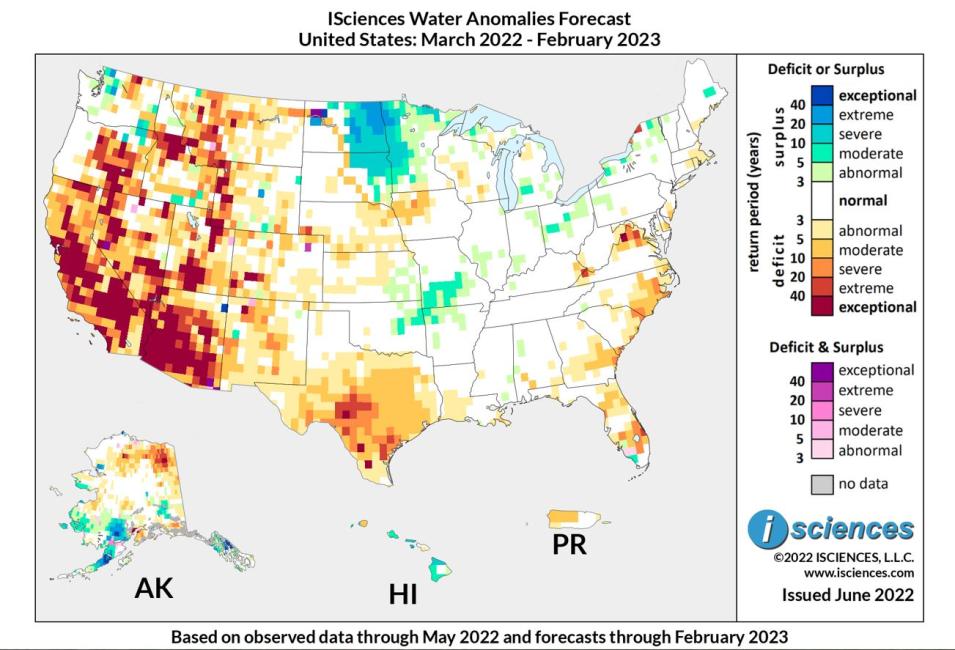Thomas Parris, President, ISciences, LLC
Research Interests: Using remotely sensed Earth observation data to inform and enhance public policy; assessing the impact of water and climate stress on people, industry, and agriculture; helping companies understand and manage their exposure to environmental risk; and analyzing and assessing the risk of environmental and social threats to human security. Research Highlights: When seen from space, the blue sphere that we call home seems to have all the water we could ever need. Most of that blue, however, is saltwater. According to information from NASA, only 2.5% of Earth’s water is freshwater, and most of that is frozen in polar ice caps, glaciers, and other ice. The small amount of freshwater that remains is all that’s available for us to use—and as Earth’s human population grows, so does our demand for it.
The United Nations reports that global freshwater use has increased by a factor of six over the past 100 years, and it has continued to grow at a rate of roughly 1% per year since the 1980s. Much of this growth can be attributed to a combination of population growth, economic development, and shifting consumption patterns. Climate change is having an impact on freshwater supplies too, as rising temperatures and shifting precipitation patterns have already led to both prolonged drought and increased incidences of flooding in the United States and around the world.
Given these freshwater realities, scientists and business leaders are developing novel ways to monitor water quality, estimate water availability, track water use, and measure world-wide precipitation to help resource managers and decision-makers better manage water resources for critical industries and populations around the globe. One of them is Thomas Parris, President of the Michigan-based limited liability company ISciences. Parris’ company provides consulting services to clients in the public, private, and nonprofit sectors in the areas of water and climate, human security, corporate sustainability, remote sensing, and geospatial analysis.
In addition, Parris is also a member of NASA's Socioeconomic Data and Applications Center (SEDAC) User Working Group (UWG). SEDAC, one of 12 Distributed Active Archive Centers (or DAACs) in NASA’s Earth Observing System Data and Information System (EOSDIS), is operated by the Center for International Earth Science Information Network, a unit of the Earth Institute at Columbia University based at the Lamont-Doherty Earth Observatory in Palisades, New York. As part of its mission to synthesize Earth science and socioeconomic data and information for policymakers and applied science users, SEDAC archives, manages, and distributes the data and tools that pertain to both Earth science and the social sciences.
ISciences has been involved in projects ranging from assessments of COVID-19’s impact on electricity demand and forecasting food crises in Africa and political instability in India to evaluating nation-state resilience to political instability and assessing the effectiveness of corporate sustainability programs. However, a major focus of its work is assessing the impact of water stress on agriculture, industries, and people around the globe.
As a case in point, ISciences has developed a Water Security Indicator Model (WSIM) that monitors and forecasts water anomalies on a near global basis.
“The WSIM monitors and forecasts surface water anomalies—droughts and floods—worldwide with lead times of up to nine months,” said Parris. “[It] has been in continuous operation since 2011 and we provide monthly reports as a public service. Anyone interested can subscribe by pressing the “sign up” button on the ISciences website. These reports are routinely used to assess emerging water security, food security, energy security, public health, governance, and humanitarian response issues in the public, private, and non-governmental sectors worldwide.”
